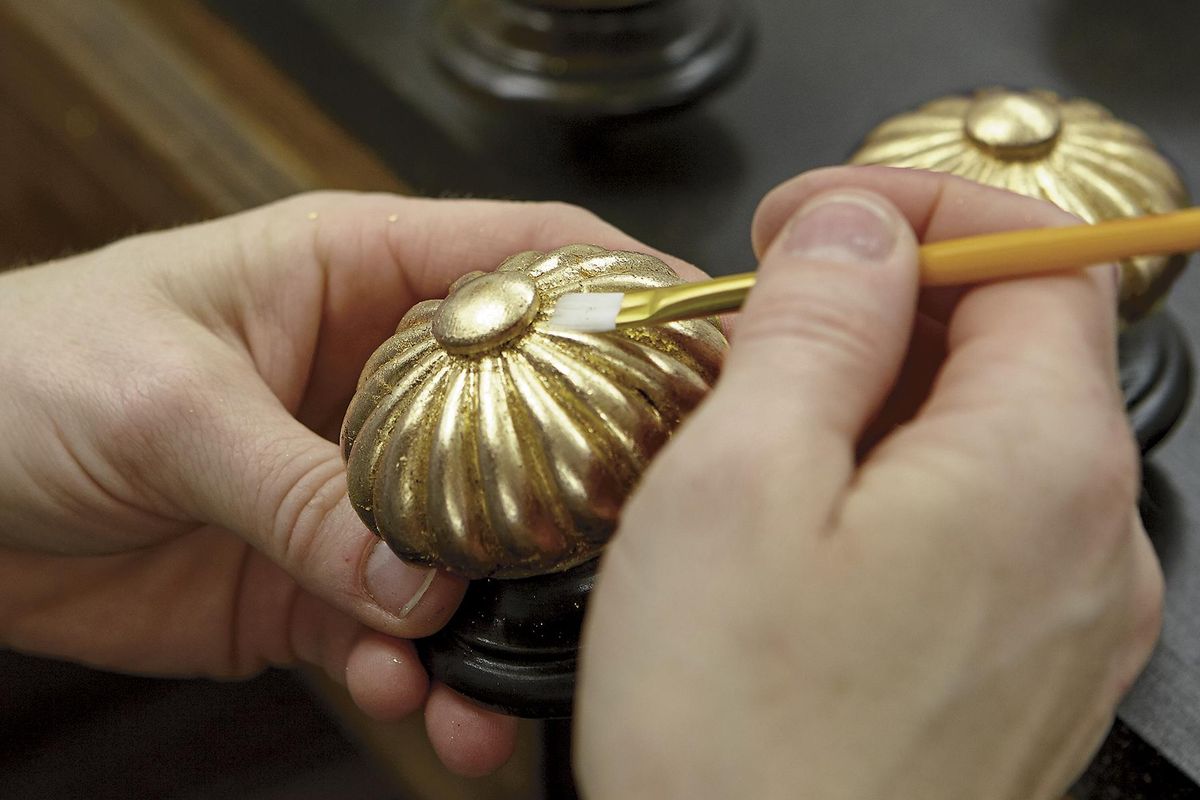‘Genuine leather?’ ‘Real wood?’ How to read furniture labels

Americans spend billions of dollars a year on furniture, but they’re often not getting what they paid for. A big part of the problem is misleading labels, experts say.
Terms like “genuine leather” and “real wood,” which seem straightforward enough, can be industry code-words for composite materials.
And once items arrive on your doorstep, furniture – unlike most other consumer goods – is often too cumbersome to return. It’s also the type of product that people buy infrequently, and so they might be unsure what to look for.
“The language that companies sometimes use to sell their furniture is so funny and misleading that even I was duped by an online ad into thinking I was getting something made of solid wood,” says Jen Levin, who owns the Maine-based Chilton Furniture Co. with her husband, Jared. They specialize in Shaker-style wood furniture.
“I am extremely particular about wood, and my husband laughed his head off when he learned I’d been fooled into buying furniture made of some kind of composite. And guess what? It would have been such a pain to return the chairs that I ended up keeping them,” she says. “It’s embarrassing to admit.”
“The minute I pulled them out of the box I knew they were wrong. They were too lightweight, and if you look at where the chair leg meets the seat, there was a little space where the so-called ‘wood grain’ stopped and the leg was just a pulpy white.”
Levin and other furniture experts advise consumers to ask questions about what they’re buying. The term “top-grain leather” indicates a higher quality product than “bonded” or “genuine” leather. “Solid wood,” or better yet a specific type and quality of solid wood, indicates higher quality than “real wood” or, for example, “cherry colored wood,” terms often used to misrepresent lower-quality wood furniture.
“The difference is truly in the details,” says Tracy Paccione, senior vice president of merchandizing for Ethan Allen furniture. But, she says, “there are some things you can look for to distinguish high-quality furniture from the rest.”
Wood
“We recommend looking for quality construction details, such as dovetailed drawer corners, mortise-and-tenon joinery on furniture tops and rails, and floating anti-warp cleats on dining table tops and headboards,” Paccione says. “Intricate wood carvings or hand-applied accents can only be achieved with great attention and skill. They are good indicators that the piece was made with care.”
Leather
When looking for leather furniture, ask if the piece is fully upholstered in genuine leather, Paccione says. Some upholstered leather pieces may be vinyl-matched, meaning they are partly upholstered in a vinyl that matches the leather. Paccione says Ethan Allen “only uses top-grain and full-grain leather for its upholstered furniture pieces.”
Know your leather lingo:
“Bonded leather” is a material that has been reprocessed from many leather pieces, which typically have been ground up, reconstituted and glued together into a sheet. It is typically less resilient than hide, and is more likely to crack and peel.
“Genuine leather” is made from a hide, but the term doesn’t necessarily mean it is well made. Bonded leather that contains only hide parts can be marketed as genuine leather.
“Top-grain leather” comes from the most durable part of the hide. It is lightly sanded or buffed to minimize natural markings.
“Full-grain leather” is unaltered by sanding or buffing, so it retains the hide’s natural markings and is often thicker and more durable.
Fabric
When choosing upholstery, think about your lifestyle, Paccione says.
“Does it need to withstand pets and the kids on a sofa, or is it being used for an accent piece in the bedroom? Look for details about the fabric’s wearability, or consider high-performance fabrics that are specially treated with protective finishes,” she says.
Joinery
Joinery can be a tip-off to the quality and longevity of a piece of furniture. “Look for a smooth glide when operating the drawer, and be sure it doesn’t tilt down and fall or pit when pulled out entirely,” Paccione says.
Both she and Levin say features to look for include: dovetail joinery on all four drawer corners, dovetail guides and anti-tip rails to prevent the drawer from tilting downward when it’s pulled out, and thicker drawer sides and back.
“Wood-on-wood joinery is top of the line,” Levin says. “In the long run, metal will loosen in wood, and nothing is really going to fix that. … but with wood-on-wood joinery, the joint becomes stronger over time.”
“Details like that are important to look for because looks and description can be deceiving,” Levin says.